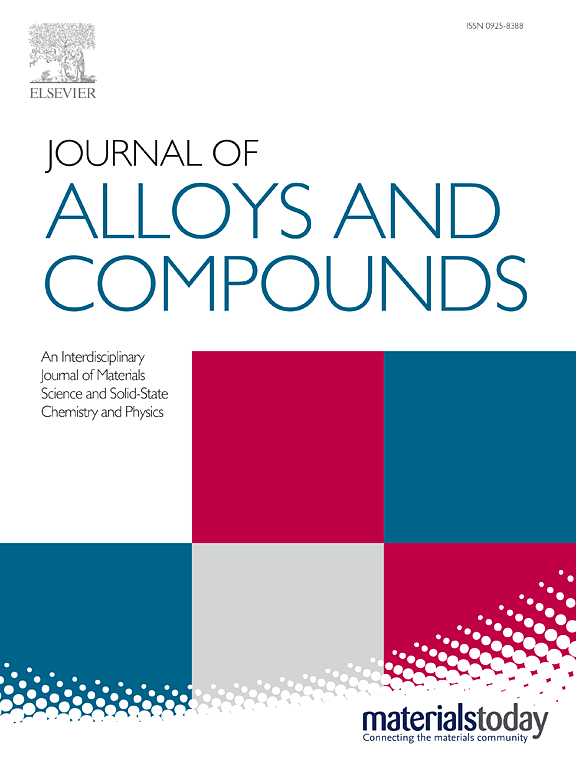Effect of Cr content on microstructure and properties of Cu-Cr-W alloy based on theoretical and experimental analysis
IF 6.3
2区 材料科学
Q2 CHEMISTRY, PHYSICAL
引用次数: 0
Abstract
Cu-W alloy has been widely applied of is due to the combination of the high melting point and high strength of W metal and the good electrical conductivity of Cu metal. In this study, the first-principles were used to construct Cu-Cr-W alloy models with different Cr ratios, and their electronic structures and elastic constants were calculated. The results show that the introduction of Cr atoms changes the energy of the electron states of Cu-3d and W-5d orbitals, promoting them to couple and form bonds more easily. Moreover, Cr-3d and W-5d orbitals can form strong bonds, resulting in an increase in the bulk modulus, Young's modulus and shear modulus of the material with the increase in the number of Cr atoms. According to this calculation trend, Cu-W alloys with different Cr contents were prepared by mechanical alloying according to the atomic ratio and sintered into billets by SPS to study their structures and properties. Experiments show that when the Cr addition reaches 4 at%, the material has the best strength and hardness. The tensile yield strength is increased by about 34.7% compared with that of the Cu-W alloy, and the tensile strength is increased by about 30.4%. Considering the combination of material strength and electrical conductivity, when the Cr addition is 1–2 at%, the material has both excellent electrical conductivity and tensile strength. In addition, an appropriate amount of Cr can refine the grains. The diffusion of Cr on the surface of W particles to form Cr基于理论和实验分析了Cr含量对Cu-Cr-W合金组织和性能的影响
Cu-W合金由于W金属的高熔点、高强度和Cu金属良好的导电性而得到了广泛的应用。本研究利用第一性原理建立了不同Cr比的Cu-Cr-W合金模型,并计算了其电子结构和弹性常数。结果表明,Cr原子的引入改变了Cu-3d和W-5d轨道的电子态能量,使它们更容易偶联成键。此外,Cr-3d和W-5d轨道可以形成强键,导致材料的体模量、杨氏模量和剪切模量随着Cr原子数的增加而增加。根据这一计算趋势,采用原子比机械合金化法制备了不同Cr含量的Cu-W合金,并用SPS烧结成坯料,研究了其组织和性能。实验表明,当Cr的添加量达到4% at%时,材料具有最佳的强度和硬度。与Cu-W合金相比,其抗拉屈服强度提高了34.7%,抗拉强度提高了30.4%。综合考虑材料强度和导电性,当Cr添加量为1-2 at%时,材料具有优异的导电性和抗拉强度。此外,适量的铬可以使晶粒细化。Cr在W颗粒表面扩散形成Cr0.5W0.5及其自身的硬特性是提高Cu-Cr-W抗拉强度的主要原因。将计算得到的弹性常数与实验得到的力学性能变化进行比较,发现计算结果的趋势与实验结果吻合较好。
本文章由计算机程序翻译,如有差异,请以英文原文为准。
求助全文
约1分钟内获得全文
求助全文
来源期刊

Journal of Alloys and Compounds
工程技术-材料科学:综合
CiteScore
11.10
自引率
14.50%
发文量
5146
审稿时长
67 days
期刊介绍:
The Journal of Alloys and Compounds is intended to serve as an international medium for the publication of work on solid materials comprising compounds as well as alloys. Its great strength lies in the diversity of discipline which it encompasses, drawing together results from materials science, solid-state chemistry and physics.
 求助内容:
求助内容: 应助结果提醒方式:
应助结果提醒方式:


